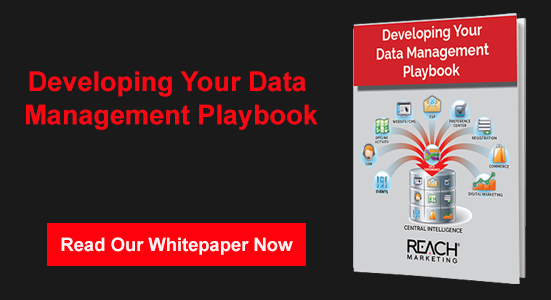Your audience has a lot of concerns and pain points to manage, but which ones matter to them most? How do they prioritize? How can you use that knowledge to help them make important buying decisions? To arrive at the answers, you and your marketing database manager can try a T-shaped approach to give you greater clarity on market segmentation and meeting your leads where they need you to be.
Why a ‘T’?
T-shaped thinking describes covering all bases to a limited extent and drilling deeply in a few key areas of knowledge. The layer of general information is the crossbar of the ‘T’ in this model, and the deep dive is its central bar. For example, some of your leads might be on a strict timeline for finding solutions. The base of their ‘T’ goes directly to how quickly you can solve their problem. Your marketing database manager needs to assess your overall audience quickly and just thoroughly enough to know where to sink that particular well with that market segment.
Contrast this to models that ignore lateral data and attempt to go straight to the deeper drilling, but miss important ancillary information: an ‘I’-shaped approach, you could say, or possibly silo-shaped as this approach often works in isolation. While the solution your marketing team offers may be lucky enough to hit your market segment’s main issue directly, you risk missing the target altogether if you haven’t done any surface research.
Conversely, if all you’ve done is skim the surface of your marketing analytics and haven’t gone into any depth about what motivates your audience, you may not reach anyone at all – or at least, not at the levels at which key decisions are made.
Drilling into Your Database
How can your organization both canvass a broad spectrum of your audience and zoom in on a narrow but deep portion of it? With a well-designed, centralized marketing database, you have access to the breadth and depth you need. Let’s look again at those time-sensitive prospects. Do they have something else in common, such as a geographical location, industry type, or seasonal needs? With a relational database, your data manager can take a look at your analytics and tell you what their common denominators are.
Only with a good understanding of the bigger, broader picture can you know where to go into deeper detail. Database services that look at the macro view before zooming in on finer features show you how to re-draw market segments in ways that directly affect your ability to address their needs.
Multi-Channel with a Difference
A T-shaped strategy works for data analysis, but it also helps you prioritize how you market to your audience. Your time-sensitive segment, for example, may not have time for a video feature, instead opting for infographics that give them knowledge at a glance. Even as they reach the bottom of the marketing funnel, their time crunch remains; they might not be as likely to sign up for the two-hour webinar and instead download white papers they can read at their own accelerated pace. Marketers need to know how different segments signal buying readiness so they can adapt to their audience’s varied needs.
© Reach Marketing LLC 2017 All Rights Reserved.







